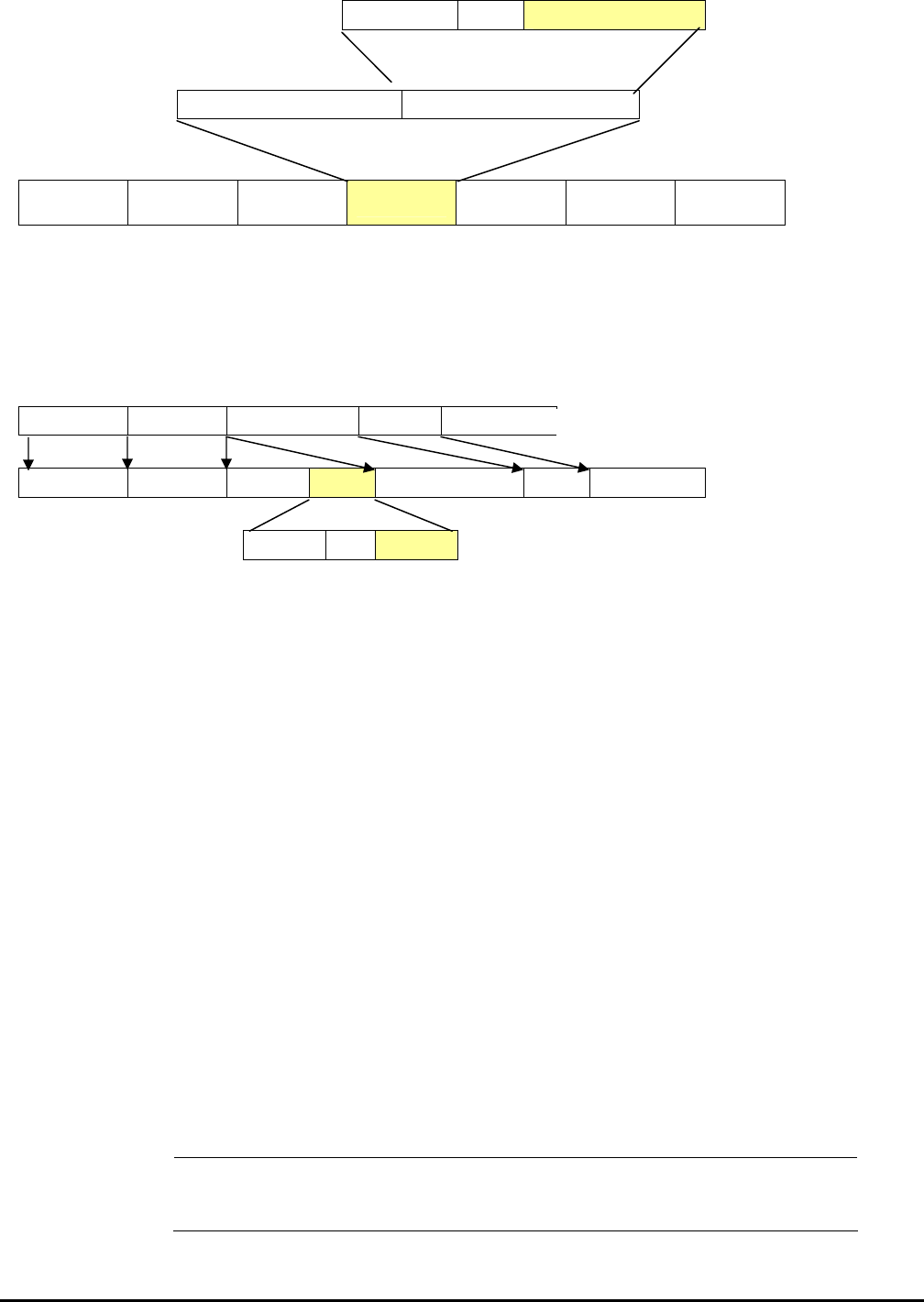
- 34 -
802.1Q Tag
User Priority CFI
VLAN ID (VID)
3 bits 1 bits 12 bits
TPID (Tag Protocol Identifier) TCI (Tag Control Information)
2 bytes 2 bytes
Preamble
Destination
Address
Source Ad-
dress
VLAN TAG
Ethernet
Type
Data FCS
6 bytes 6 bytes 4 bytes 2 bytes 46-1517 bytes 4 bytes
The Ether Type and VLAN ID are inserted after the MAC source address, but before the original Ether Type/Length or
Logical Link Control. Because the packet is now a bit longer than it was originally, the Cyclic Redundancy Check (CRC)
must be recalculated.
Adding an IEEE802.1Q Tag
Dest. Addr. Src. Addr. Length/E. type Data Old CRC
Dest. Addr. Src. Addr.
E. type
Tag
Length/E. type Data New CRC
Priority CFI
VLAN ID
Port VLAN ID
Packets that are tagged (are carrying the 802.1Q VID information) can be transmitted from one 802.1Q compliant network
device to another with the
VLAN information intact. This allows 802.1Q VLAN to span network devices (and indeed, the
twork devices are 802.1Q compliant).
Ev D, for use within the switch. If no VLAN
ar equal to 1. Untagged packets are
assigned the PVID of the port on which they were received. Forwarding decisions are based upon this PVID, in so far as
Tagged packets are forwarded according to the VID contained within the tag. Tagged packets are
is not used to make packet forwarding decisions, the VID is.
rt can have only one PVID, but can have as many VID as the switch has memory in its VLAN table to store them.
may be tag-unaware, a decision must be made at each port on a tag-aware device
before packets are transmitted – should the packet to be transmitted have a tag or not? If the transmitting port is connected
to a tag-unaware device, the packet should be untagged. If the transmitting port is connected to a tag-aware device, the
packet should be tagged.
Default VLANs
The Switch initially configures one VLAN, VID = 1, called "default." The factory default setting assigns all ports on the
Switch to the "default". As new VLAN are configured in Port-based mode, their respective member ports are removed
from the "default."
#Notice:
Base on the Switch chipset specification, the Switch supports SVL(Shared VLAN Learning) ,
all VLAN groups share the same Layer 2 learned MAC address table.
entire network – if all ne
ery physical port on a switch has a PVID. 802.1Q ports are also assigned a PVI
e defined on the switch, all ports are then assigned to a default VLAN with a PVID
VLAN are concerned.
also assigned a PVID, but the PVID
Tag-aware switches must keep a table to relate PVID within the switch to VID on the network. The switch will compare the
VID of a packet to be transmitted to the VID of the port that is to transmit the packet. If the two VID are different the switch
will drop the packet. Because of the existence of the PVID for untagged packets and the VID for tagged packets, tag-aware
and tag-unaware network devices can coexist on the same network.
A switch po
Because some devices on a network
Original Ethernet
New Tagged Packet


















